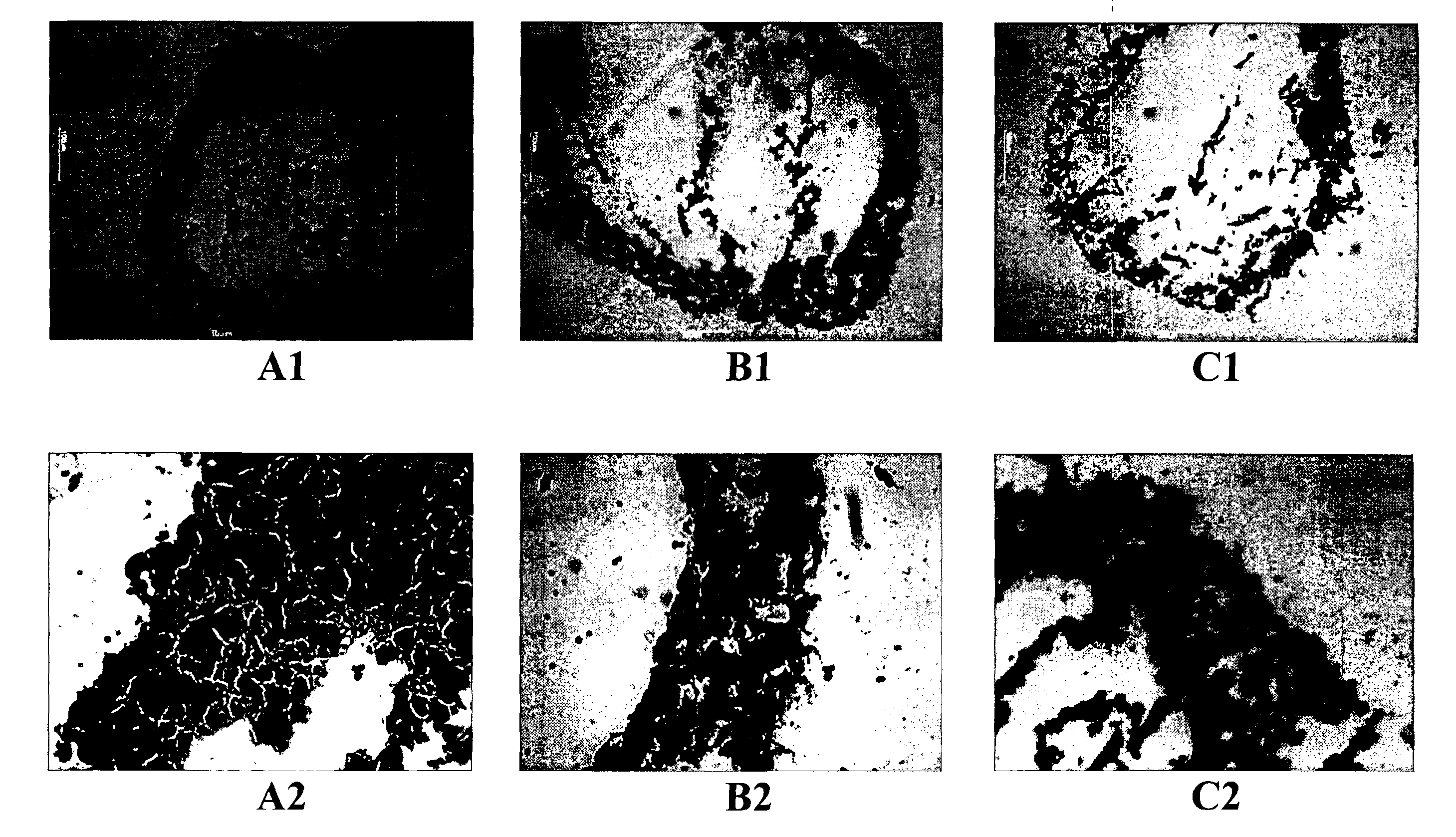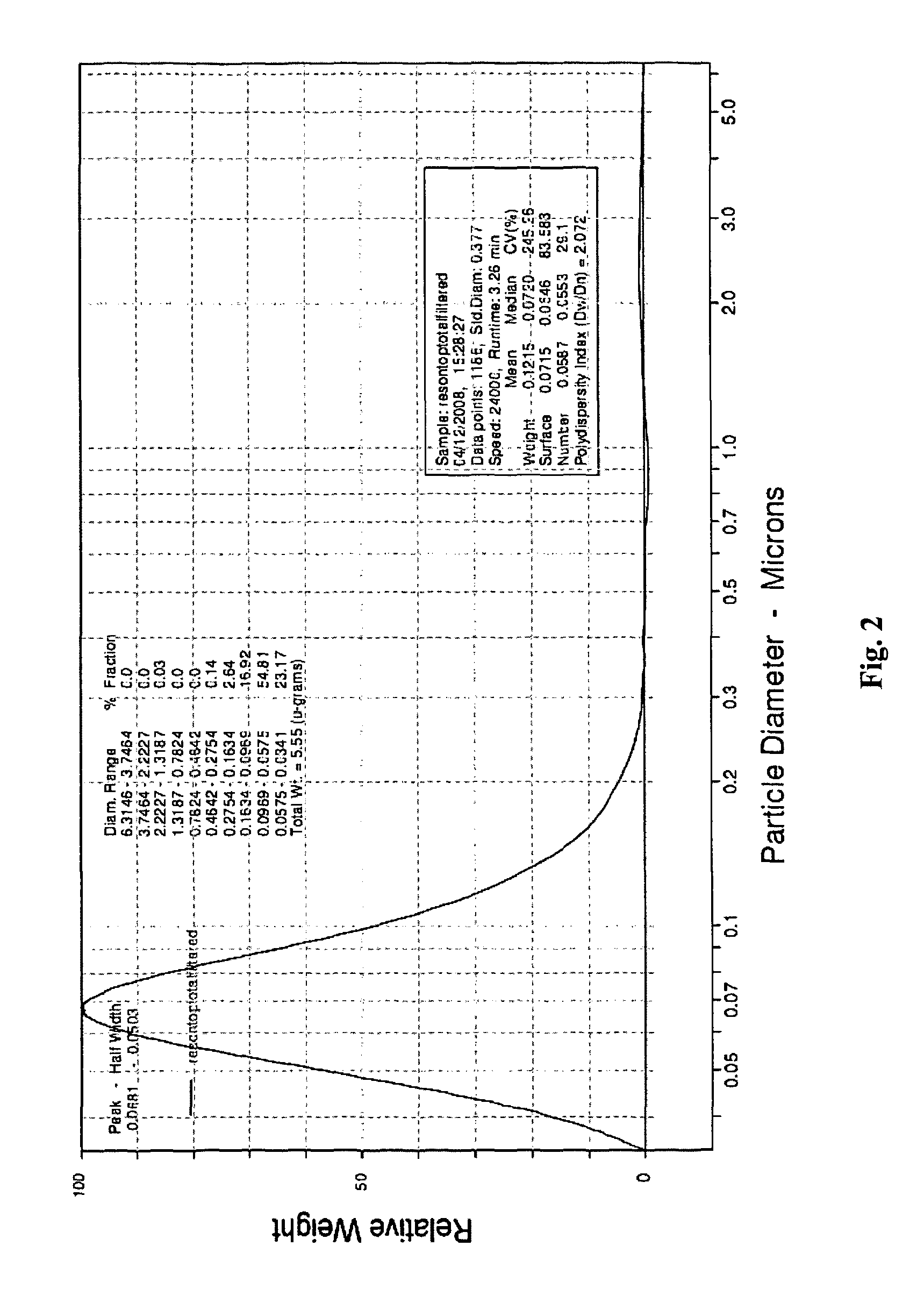Particles for the treatment of cancer in combination with radiotherapy
a technology of radiotherapy and particles, applied in the field of particles, can solve problems such as oxidative damage to cellular dna
- Summary
- Abstract
- Description
- Claims
- Application Information
AI Technical Summary
Benefits of technology
Problems solved by technology
Method used
Image
Examples
example 1
[0158]Particles of titanium dioxide doped with gadolinium, erbium, europium, neodymium, terbium or combinations of these dopants were prepared according to the method above. The photoactivity of the particles was then tested and measured relative to the commercially available titanium dioxide photocatalyst P25 (Degussa) using a coumarin assay (Ishibashi et al., Electrochemistry Comm., 2 (2000), 207-210). For example, 0.01 g of P25 was added to 8 mL of 2 μL−1 of coumarin in PBS. Samples were exposed to either white light from a UVA Cube 400 or a UV lamp. Aliquots were removed at set time intervals (e.g. every 30 mins) and assayed in a fluorimeter (Ex. 345 nm, Em. 496 nm). Activity was expressed as a percent of the activity of P25. The results are shown in FIG. 3.
[0159]The particles doped only with gadolinium or erbium were then modified by calcination at various temperatures. The photoactivity of the particles relative to the photocatalyst P25 (Degussa) was again measured. The result...
example 2
[0161]Doped titanium dioxide particles were prepared containing varying concentrations of gadolinium using the above method. The particles were fractionated by size using a 0.2 μm cellulose filter and particles of approximately 65 nm diameter were used for subsequent cell experiments. The silica coated doped titanium dioxide particles are all below 200 nm, with a peak size centred around 65 nm, which should facilitate passive uptake into cells (see FIG. 2). The particles were coated with silica using the method above to prevent aggregation and to promote biocompatibility.
[0162]The silica layer of the particles was labelled with FITC (green). After incubating the cells overnight in the presence of the doped titanium dioxide particles, the particles were found to have passively entered the cells and were localised to endosomes, as shown in FIG. 5. The endosome is in the vicinity of the cell nucleus. The cells show a minimum viability of 80% for all silica coated particles, which demon...
example 3
[0169]Silica coated titanium dioxide particles doped with gadolinium, europium and erbium in varying concentrations were prepared following the methods set out above. Samples containing the RH30 cell line were incubated overnight with the doped titanium dioxide particles, before being irradiated at 0.58 Gy min−1 to give an X-ray exposure of 3 Gy. Control samples containing the cell line that was not incubated in the presence of the doped titanium dioxide particles were also irradiated.
[0170]Following irradiation, the cells were incubated at 37° C. for 24 or 48 hours, then washed with PBS to remove dead, non-adherent cells. The adherent (live) cells were trypsinized to permit removal from the multi-well plate. Live cells were then counted using a Neubauer haemocytometer.
[0171]Cell viability was expressed as a function of the control samples that without the doped titanium dioxide particles, in order to account for the cell death that resulted solely from exposure to the X-rays. Cell ...
PUM
| Property | Measurement | Unit |
|---|---|---|
| Temperature | aaaaa | aaaaa |
| Size | aaaaa | aaaaa |
| Paramagnetism | aaaaa | aaaaa |
Abstract
Description
Claims
Application Information
 Login to view more
Login to view more - R&D Engineer
- R&D Manager
- IP Professional
- Industry Leading Data Capabilities
- Powerful AI technology
- Patent DNA Extraction
Browse by: Latest US Patents, China's latest patents, Technical Efficacy Thesaurus, Application Domain, Technology Topic.
© 2024 PatSnap. All rights reserved.Legal|Privacy policy|Modern Slavery Act Transparency Statement|Sitemap



